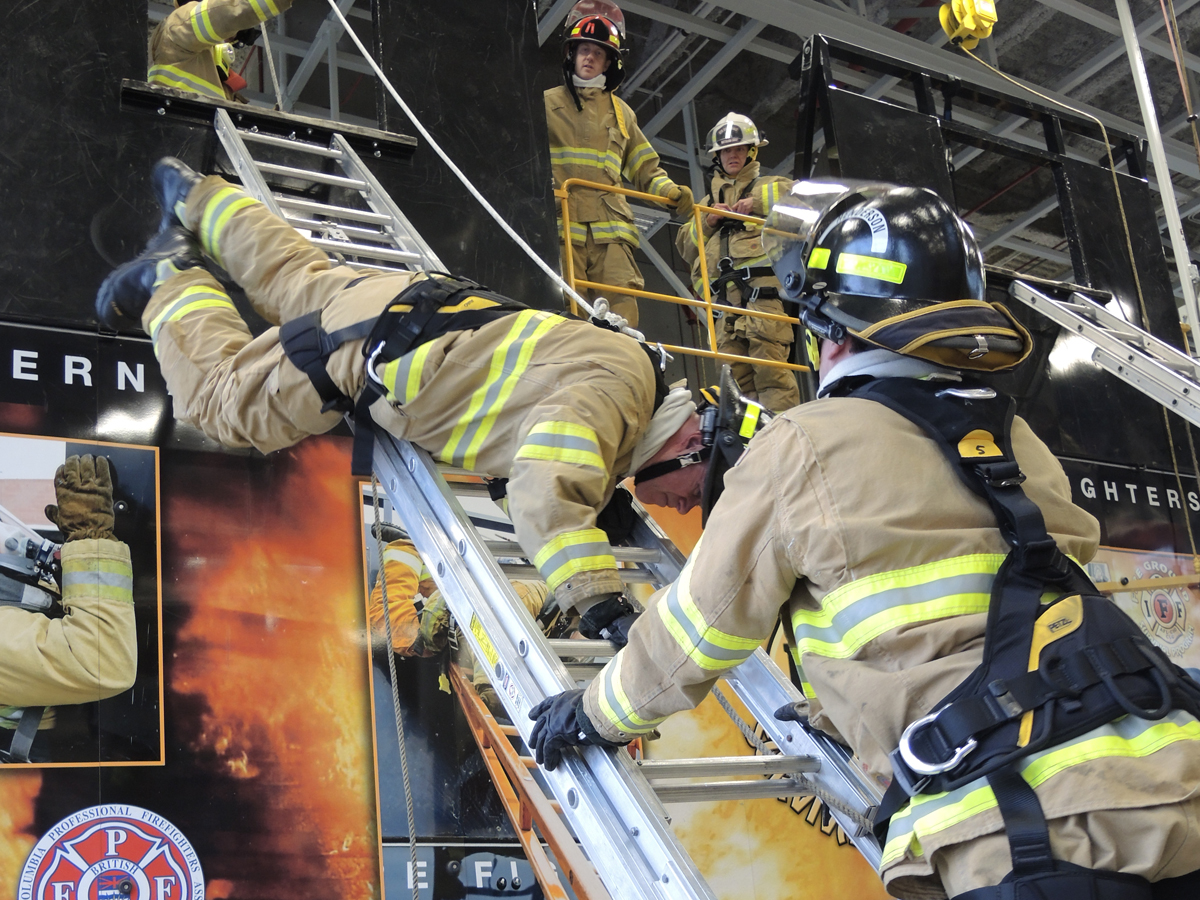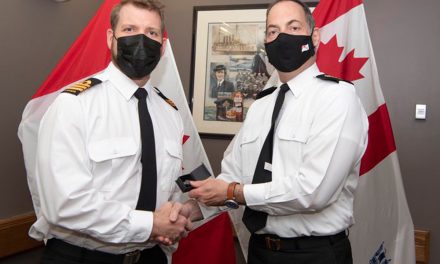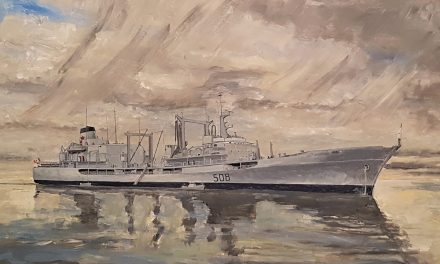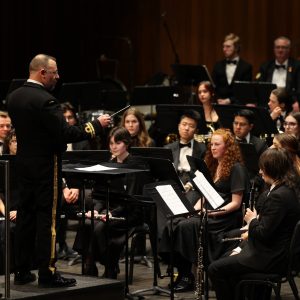
Firefighters from CFB Esquimalt Fire and Rescue practice their ladder bails during an International Association of Firefighters (IAFF) Fire Ground Survival Program. The program is designed to help firefighters across North America escape dangerous life-threatening situations during emergency calls. Photo by Peter Mallett, Lookout
Peter Mallett, Staff Writer ~
Normally when entering a burning building the focus is on saving the lives but now firefighters at CFB Esquimalt are also learning how to save themselves.
During the month of January all 60 firefighters at the base, civilian employees of the Port Operations and Emergency Services Branch (POESB), have been enrolled in the International Association of Fire Fighters (IAFF) Fire Ground Survival Program. The intensive training course is designed to help firefighters across North America gain all the necessary skills for survival in such an emergency, offering training to help them prevent a mayday situation and also effectively manage a mayday call from one of their coworkers.
“This is extremely beneficial safety training for the department and a first for us,” said CFB Esquimalt Fire and Rescue Chief Geordie Douglas. “We hope our firefighters never get into a situation like this but if they do, they now have the tools in their toolbox to get themselves out of a burning building or other structure safely.”
The BC Chapter of the union representing full-time firefighters in the United States and Canada and is providing the training kit which is all packed up neatly in a 30-foot storage trailer that is parked in their station house on Esquimalt Rd. Until the end of the month the firefighters will be practising the necessary techniques of how to safely exit a burning building when fire, smoke or poisonous fumes make it too dangerous for them to remain.
Captain Jim Grant of CFB Esquimalt Fire and Rescue is the course instructor delivering the program to firefighters at the base as well as those who work at Nanoose Harbour and Rocky Point locations. He says the training is vitally important because in many emergency situations firefighters fail to recognize their own life is in jeopardy and time is often a critical factor when it comes to their own survival.
The training is crucial says Grant while pointing to the infamous Black Sunday incident in 2005 when three firefighters of the New York City Fire Department were killed in two separate incidents when six firefighters jumped from fourth-story windows of an apartment fire to escape the blaze and four others were seriously injured.
“This program is all about making our fire fighters and others see the big picture,” says Grant. “Making them understand that yes they have a job to do but also that sometimes in dangerous situations we are limited to what we can do for our own safety to survive the day and live to save more lives in the future.”
The trailer includes five different apparatus for each unit of the Fire Ground Survival Program. On Jan. 10, the firefighters were busy practicing their skills at Ladder Bails: situations when they need to get out of the upper floors of a building quickly, head first and guiding themselves down the ladder on their bellies and also practicing the technique to turn themselves right-side up on the ladder known as a ‘hook-2, grab-4’ manoeuvre.
Also that day the firefighters practised their Upper Floor Window Hang skills, for situations when they can’t get themselves out of the structure but call in a mayday and straddle themselves safely on the frame of a window until help arrives.
Other lessons in the course include Low Profile Manoeuvres, which uses a large metal box with small holes punched in it to simulate a situation where firefighters are trapped in a room and the only escape is holes punched through drywall or other building materials.
When the trailer is packed up and sent to another location in B.C. next month, the firefighter’s will continue with their training drills. Going forward, Chief Douglas says his employees will continue to practise what they have learned from the program on a regular basis. Douglas says plans are in the works to have similar training equipment installed permanently at their Urban Search and Rescue (USAR) facility at Work Point.












